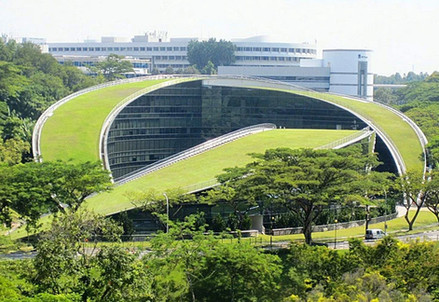Green Spaces in Urban Design: Building Sustainable and Livable Cities
- circular connection
- May 3, 2024
- 2 min read
Updated: Oct 12
Cities are embracing green space as essential infrastructure, not a luxury. From rooftop gardens to tree-lined walkways, nature is reshaping the way people live in urban environments.

Image: ST Photo/Kevin Lim
In the concrete jungles of modern urban landscapes, the integration of green spaces has become increasingly vital in creating sustainable and livable environments. From bustling metropolises like Singapore to cities worldwide, urban designers are recognizing the numerous benefits of incorporating greenery into their plans. Let's delve into why green spaces are essential and the advantages they bring to urban life.
First and foremost, green spaces serve as lungs for cities, providing vital oxygen and absorbing harmful pollutants. Trees, plants, and greenery help mitigate the urban heat island effect by providing shade and cooling the surrounding areas. This not only enhances the comfort of residents but also reduces energy consumption for air conditioning, leading to lower carbon emissions and a healthier environment.

Image: Gen X Singapore
Moreover, green spaces contribute to biodiversity and ecological balance within urban ecosystems. By creating habitats for wildlife and preserving native plant species, cities can support a diverse range of flora and fauna, promoting ecosystem resilience and sustainability. Urban parks, gardens, and green corridors act as green connectors, allowing for the movement of wildlife and the exchange of genetic material across fragmented landscapes.

Image: Pexels/ALAMEEN A-DAE
In addition to their environmental benefits, green spaces also play a crucial role in promoting public health and well-being. Access to nature has been linked to reduced stress levels, improved mental health, and enhanced overall quality of life. Green spaces provide opportunities for physical activity, recreation, and social interaction, fostering community cohesion and a sense of belonging among residents.
Furthermore, green spaces contribute to economic prosperity and property values in urban areas. Well-designed parks and green infrastructure enhance the aesthetic appeal of neighborhoods, attracting tourists, businesses, and investors. Studies have shown that proximity to green spaces can increase property values and stimulate local economies, creating jobs and driving sustainable development.

Image: Pexels/Crylll
Singapore, often hailed as a pioneer in urban greening, exemplifies the transformative power of green spaces in city planning. From the iconic Gardens by the Bay to neighborhood parks and rooftop gardens, Singapore has integrated greenery into its urban fabric, creating a more sustainable and resilient cityscape. These green spaces not only beautify the city but also provide essential ecosystem services, enhance biodiversity, and improve the overall quality of life for residents.
Images: NTU, Facebook/Gardens By The Bay
The incorporation of green spaces into urban design is essential for building sustainable, resilient, and livable cities. By prioritizing nature in city planning, urban designers can create environments that are healthier, happier, and more prosperous for current and future generations. As cities continue to grow and evolve, let us embrace the transformative power of green spaces in shaping the urban landscapes of tomorrow.













